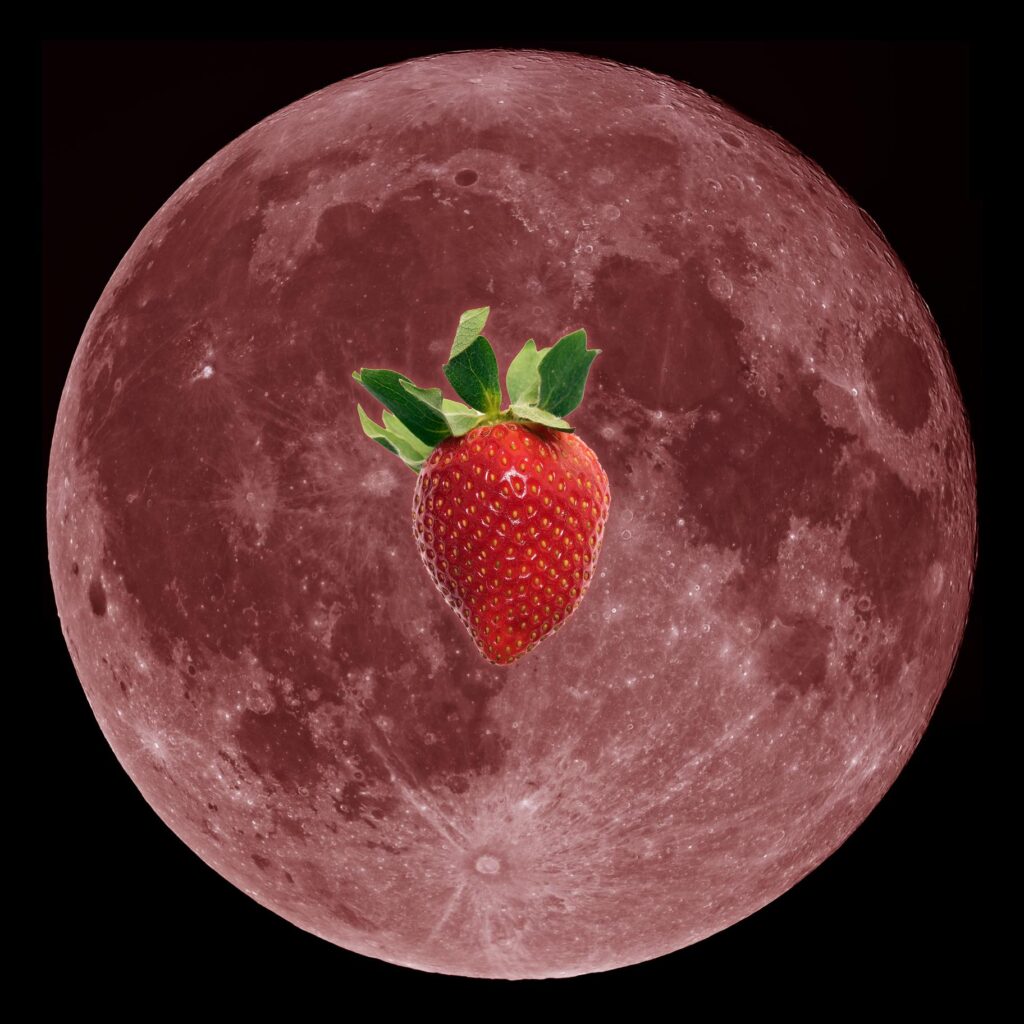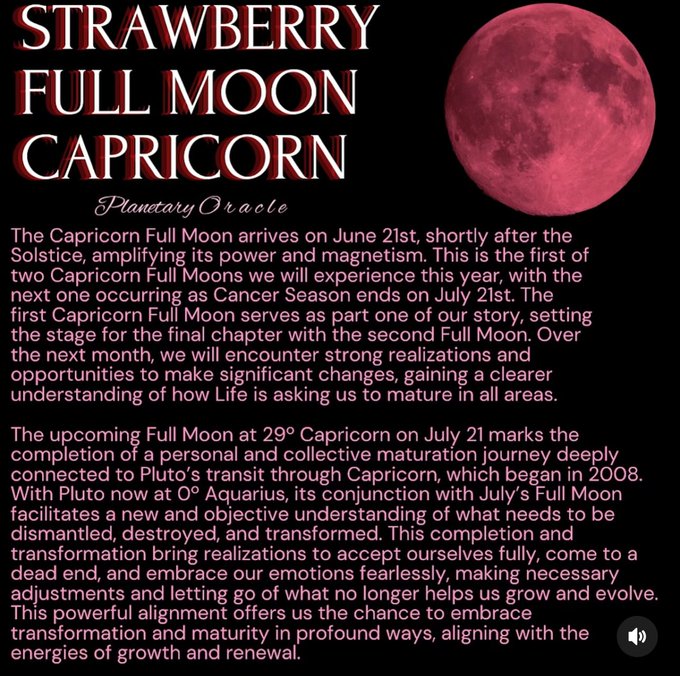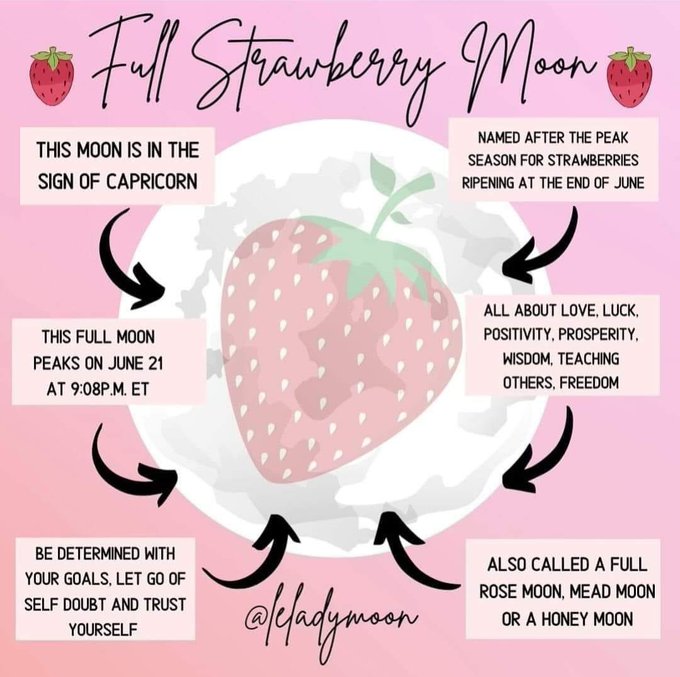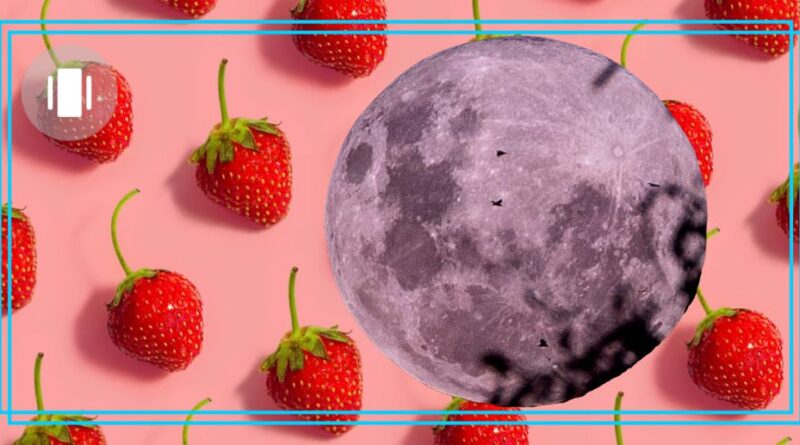Everything to know about ‘Strawberry Moon’ in Australia this weekend
The phrase “Strawberry Moon” may have piqued your interest in recent weeks having made the social media rounds over the world, but there’s less to it than it sounds.


It happens every year, and simply put, it is the full moon of June —not a rare phenomenon.
Although, this month’s full moon is happening at the same time as a winter solstice, which is a once-in-a-two-decade coincidence, meaning the size and placement of the Moon is altered.
The moniker has naturally left many expecting a red or pink coloured moon light up their skies or something resembling the actual shape of a strawberry, but it’s neither.

Why is it called a Strawberry Moon?
The name is of Native American origin and was assigned by farmers who observed the full moon’s occurrence in June —summer in the northern hemisphere —as the optimal time of year for the fruit’s harvest.
“In the 1930s the Maine Farmer’s Almanac began publishing Indian names for full moons and these names are now widely known and used,” NASA says.
“According to this Almanac, as the full moon in June this is the Strawberry Moon, a name that comes from the relatively short season for harvesting strawberries in the north-eastern United States”.
June’s full moon varies by name across the world based on each region’s norms, traditions, and seasonal patterns.

When does it appear?
In Australia, Strawberry Moon will somewhat coincide with the winter solstice on Friday, 21 June, colloquially known as the “shortest day of the year”.
This is the day which receives the least amount of daylight hours in the year, due to the southern hemisphere being at its furthest tilt away from the sun.
Conversely, the northern hemisphere experiences its longest day of the year, or the summer solstice, with maximum daylight hours.
The full moon will occur on Saturday, 22 June at 10.37am, according to astronomy site Time and Date. This falls in the morning but with clear skies it should still be visible.
At night-time, the Moon will still appear almost entirely round, with Friday, Saturday, and Sunday nights each expected to have “fullness” of about 97 to 99 percent.
Check here to see when it will be at peak in your area.

How can I see it?
You can see the Strawberry Moon just like any other —by looking up at the sky with the naked eye.
Full moons occur once every calendar month and don’t require any additional magnifying equipment to be viewed.
But moonlight will be far brighter than a regular moon because of the Sun’s relative position to it, which amplifies illumination when sunlight strikes the surface straight on.
(Think of the event as a straight line with the Earth falling in between the Sun and the Moon).

Does it look different to a regular moon?
Yes.
According to Sky and Telescope, a full moon is about six times brighter than a moon in the first or last quarter of its lunar cycle.
But because the Strawberry Moon falls in line with this year’s winter solstice, which is very rare, it is directly “opposite” the Sun in all ways.
It sets as the Sun is rising and rises when the sun sets.
This means the way the Moon is placed in the sky will be different and appear quite low or “close” to the horizon, about midnight, when the sun is at its lowest.
Of course the Moon doesn’t have any glow of its own, and always shines relative to the amount of sunlight falling on it.
Best place and time for a moon viewing
Sunrise —between 6.30am and 7.30am —is the best time to watch the Moon set over the water, and sunset is ideal to see the Moon rise —5pm to 6pm.
You don’t have to go to a specific location for a viewing, but if you want to watch it come out in its full glory, east-facing areas are the way to go.
Anyone living along the east coast will be able to catch a great view of the Strawberry Moon rising or setting over the water, with beaches or hilltops overlooking the sea often flocked to.
But even if you’re in a city or somewhere remote, there’s no way you can really miss it —as long as the clouds give way and skies remain clear. (ABC)



